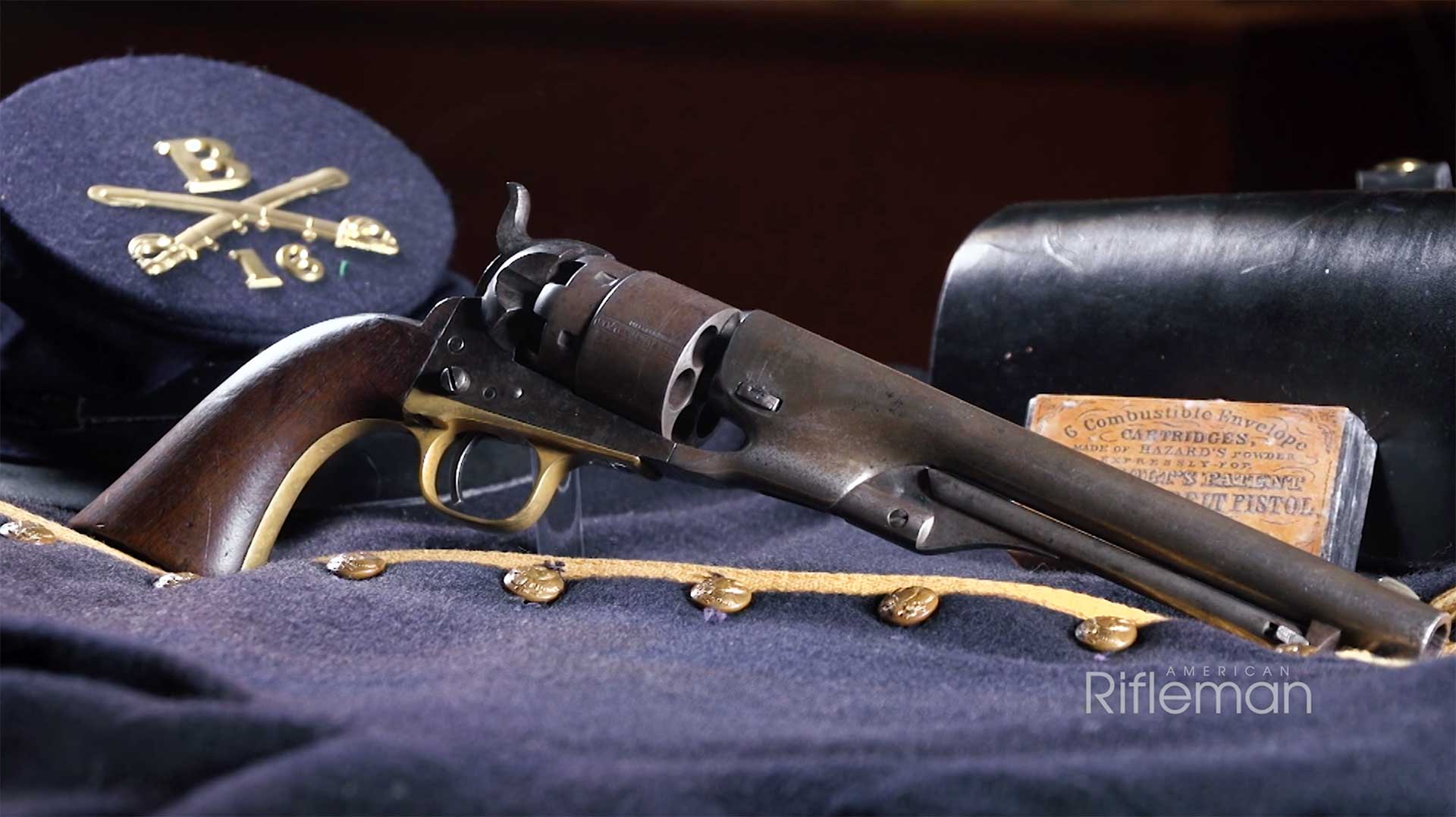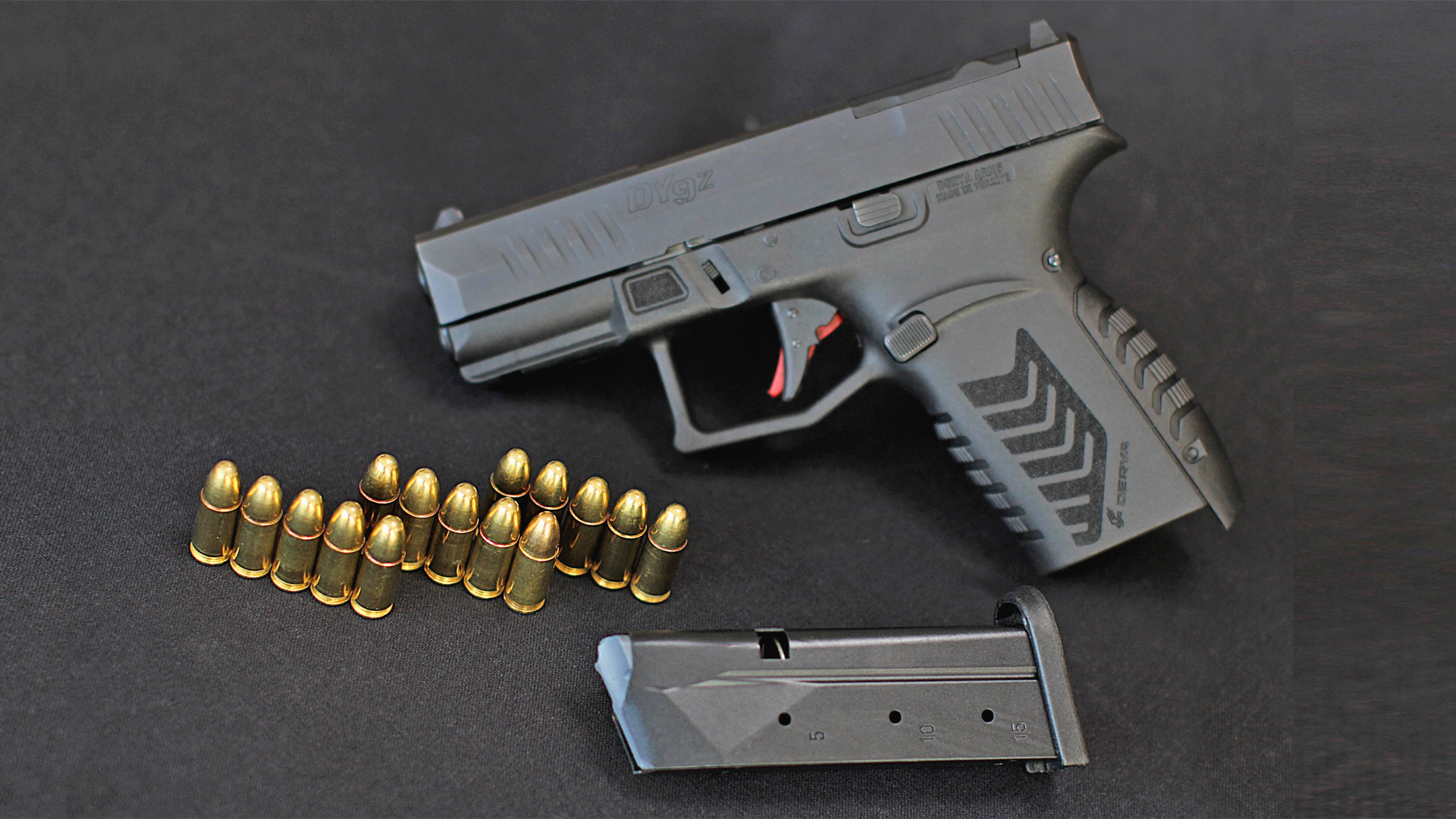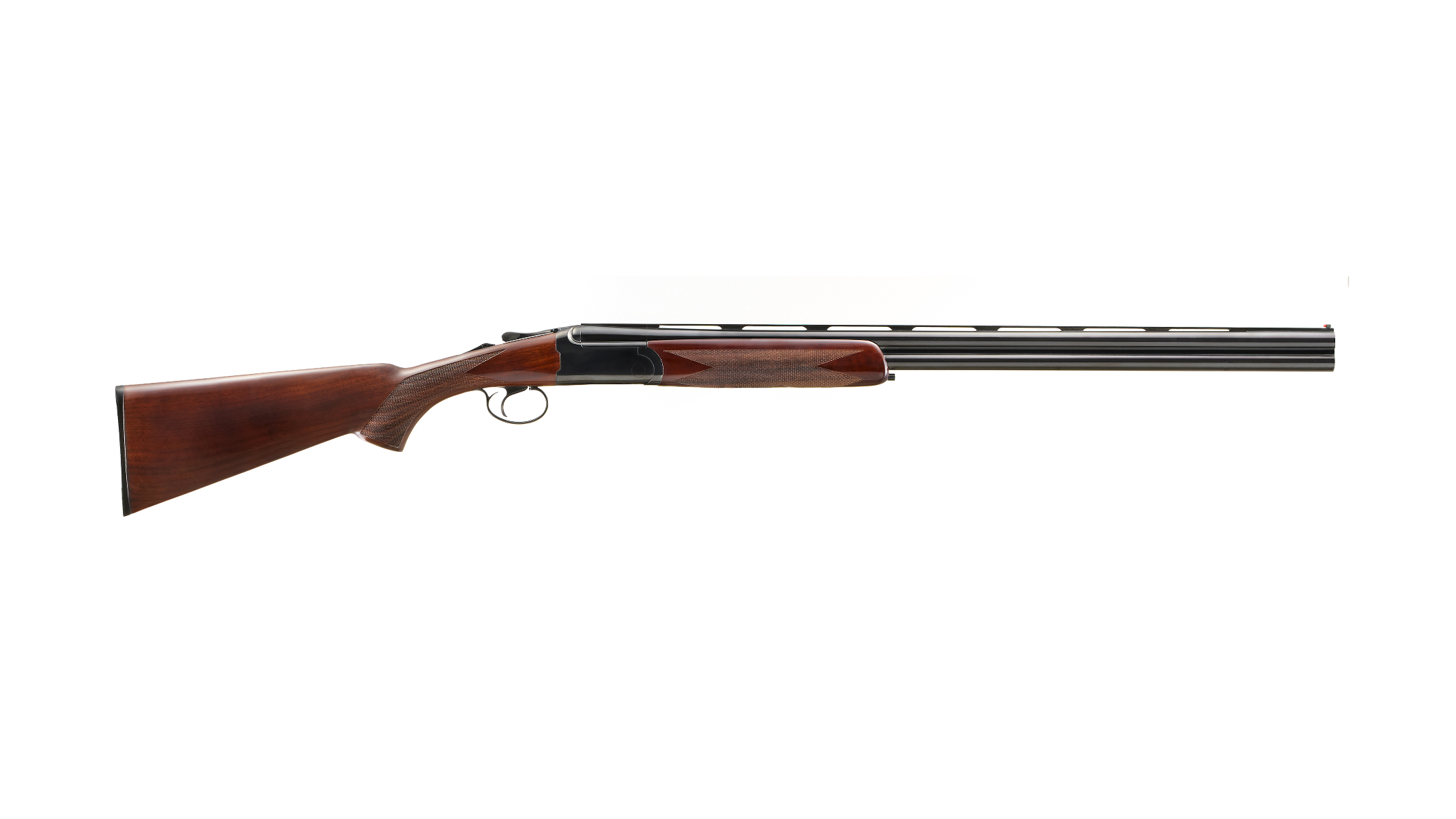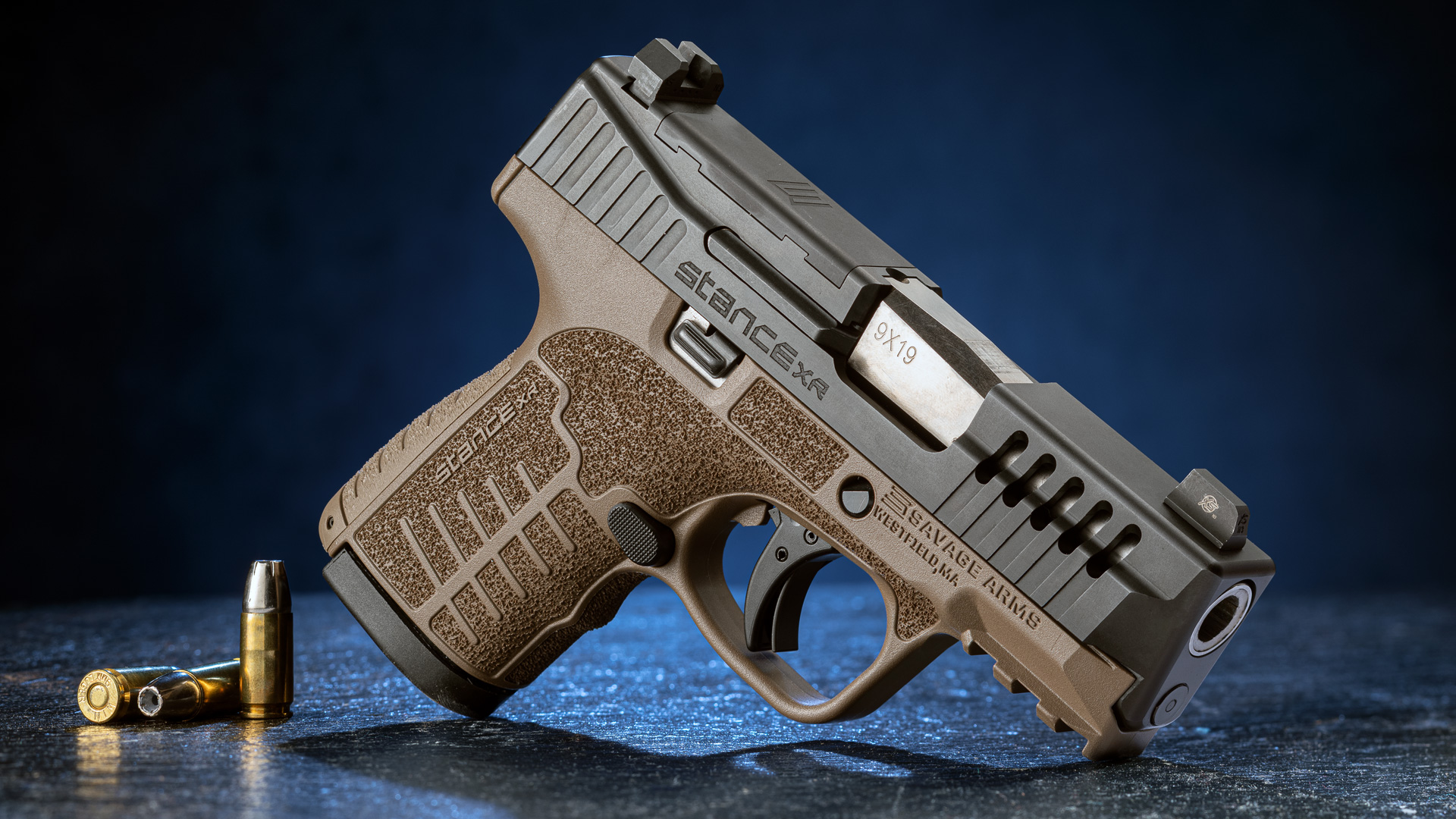
The eyes of soldiers, notables and frontiersmen, posing with their sleek, efficient Henry repeating rifles in century-and-a-half-old photographs, typically reflect pride and confidence, and imply that the rifle’s users know they’re holding something special. Such feelings are understandable. The 16-shot Henry lever-action set the owner above the norm. It was truly one of the mechanical wonders of its era.
During a time when most military and sporting arms were single-shots or cumbersome percussion repeaters, a gun that effortlessly spat out a rapid stream of bullets with only one charging of handy, self-contained cartridges was something to be admired and coveted.
Originally made in relatively limited numbers between 1860 and 1866, the Henry .44 Rimfire rifle, which was devised, built and primarily carried in the United States, eventually fell into disuse. Nearly a century-and-a-half later, a modern resurgence of interest in Civil War arms and the rise of cowboy action shooting have given many vintage arms a new lease on life-including the Henry. Replicas of the rifle began to be successfully made overseas in the 1970s. Now the process has returned full-circle thanks to Henry Repeating Arms of Bayonne, N.J., which has brought the manufacturing of this all-American firearm back home.
The Henry rifle has one of the most tortuous histories of any firearm ever. Even though its official production lasted a scant half-dozen years, its antecedents and descendants extended for many years.
In 1848 inventor Walter Hunt introduced an odd-looking lever-action longarm that chambered an early incarnation of the metallic cartridge. Hunt’s “Rocket Ball” consisted of a hollow lead bullet containing a charge of blackpowder, which had a seal at its base pierced with a small hole to allow priming from a separate source. When the round was fired, all went out the barrel or was consumed. A very few Hunt rifles were made for about a year, at which time an improved version of the gun, the Jennings, was offered by Hunt’s successor, Robbins & Lawrence, whose plant foreman was one Benjamin Tyler Henry.
Because of the low power of the Hunt Rocket Ball and the quirky Jennings magazine, very few of the repeaters were made. Robbins & Lawrence was content to offer a single-shot breech-loading version of the rifle by scavenging some of the parts of the repeater. This rifle, too, went nowhere, a good portion of them being converted to muzzleloaders by the factory and private gunsmiths.
Horace Smith (of Smith & Wesson fame) tinkered with the Jennings, and in 1851 Robbins & Lawrence came out with his version of the arm. It still chambered the Rocket Ball, albeit with an improved pellet-priming arrangement. Produced in three models, like its predecessors the Smith-Jennings failed to excite much interest.
Undaunted, Smith, now a partner with Daniel B. Wesson, forged ahead and in 1854 came out with a simpler, lever-action repeating pistol that employed a bullet similar in construction and appearance to the Rocket Ball, but which eliminated the separate ignition by having the priming compound on the base of the cartridge. Though simpler and more efficient, the cartridge was still woefully underpowered. Offered in .31 and .41 calibers, about 1,200 of the former and 500 of the latter were made before the company changed its name and became the Volcanic Repeating Arms Co. Benjamin Tyler Henry was still involved in manufacturing, and shirt manufacturer Oliver F. Winchester was now a major stockholder.
Smith & Wesson’s Volcanic pistols and carbines were still experiencing a hard-sell, and the firm was again reorganized into the New Haven Arms Co., producing the older-style pistols and carbines, which forecast the profile of the later Henrys and Winchesters.
Finally, in 1860 the Henry made its debut. Employing much of the mechanism of the Volcanic, the arm was up-scaled and redesigned by B. Tyler. Replacing the anemic Volcanic bullet was a .44-cal., copper-cased rimfire cartridge which, with its 200-gr. lead bullet backed with 26 to 28 grs. of blackpowder, gave a respectable muzzle velocity of 1125 f.p.s. and a muzzle energy of 562 ft.-lbs.-about 10 times that of the Hunt Rocket Ball!
The rifle itself incorporated a clever, lever-activated toggle-system that actuated the mechanism, and in a simple dual motion ejected a spent case and chambered a new round from an under-barrel magazine. Loading the gun was simple. One merely pushed forward on a spring-loaded brass follower by means of its integral oval button. When the follower reached the extent of its travel near the muzzle, the shooter rotated a sleeve to the left, exposing the mouth of the tubular magazine. Fifteen flat-nose .44 cartridges could be loaded into the magazine tube. Including one in the chamber, the arm had a total capacity of 16 rounds.
Next, the sleeve was returned to its normal position, the follower exerting rearward pressure on the cartridges, pushing them into a position where, by manipulating the lever downward, they could be lifted by the carrier and, when the lever was closed, chambered via the forward movement of the breechblock. Rearward motion of the breechblock also cocked the hammer. The whole operation was quick and smooth.
While the mechanism itself was well-thought-out and would be used in modified form in later Winchester rifles, the Henry did have a couple of drawbacks. First off, the cartridge itself. While a tremendous improvement over the Volcanic round, it was still a tad underpowered, especially for long-range work, when compared to most large-bore muzzleloaders and its main rival the .56-56 Spencer repeater. Too, in order for the follower to be able to slide forward, it was necessary for the magazine to have a wide slot cut into its underside. This made the ammunition vulnerable to dirt and debris. As the follower moved to the rear after each shot, its button could be stopped by the shooter’s supporting hand and, with the spring tension arrested, ammunition would fail to feed.
Even with those growing pains the rifle was a knockout. Initial guns were made with iron frames, and later ones-the majority-of brass. The piece was handsome, well-built and favorably regarded by those who used it. Timing of its introduction was also fortuitous, as a short time after the first Henrys hit the market the Civil War began.
With Oliver Winchester firmly at the helm of the New Haven Arms Co., the firm began wooing the U.S. military for government contracts and, following the lead of that consummate arms entrepreneur, Samuel Colt, presented samples of its wares to influential U.S. officials, including President Abraham Lincoln and Secretary of War Edwin Stanton.
The Yankee War Dept. ultimately purchased some 1,731 Henrys in 1862 and 1863, but the guns were complicated to make, unexpected glitches cropped up and the facilities of the New Haven Arms Co. were too limited for large-scale production. The rifles weren’t inexpensive either-$42 each, not counting extras, as opposed to $25 for an 1860 Spencer Carbine or around $20 for a Model 1861 Rifle-Musket. The Henry fired its own specific cartridge, thus logistics could also present something of a problem. Still, within units to whom they were issued, such as the 1st D.C. Cavalry, and the 7th and 66th Illinois Infantries, as well as those soldiers who privately purchased them and Rebels who captured them, Henrys were popular and highly regarded. Many positive testimonials were sent to the company from the field, such as one by Major D.S. Curtiss of the 1st Maine Cavalry who wrote, comparing his experiences with the Henry to those of the Spencer, “I am fully satisfied the Henry rifle is far superior in all respects, so that I would by no means use any other if it could possibly be procured.”
Major William Ludlow of the U.S. Corps of Engineers was also mightily impressed with the performance of the Henry at the Battle of Allatoona Pass on October 5, 1864. “What saved us that day was the fact that we had a number of Henry rifles. This company of 16 shooters sprang to the parapet and poured out such a multiplied, rapid and deadly fire, that no men could stand in front of it and no serious effort was made thereafter to take the fort by assault.”
Even tribute from the enemy was grudgingly forthcoming, Confederates dubbing the Henry, “that damned Yankee rifle that they load on Sunday and shoot all week.”
After the cessation of hostilities, production of the Henry rifle was suspended by New Haven Arms Co. in favor of an improved version featuring the King’s loading gate, which incorporated a sealed magazine and allowed the rifle to be fitted with a fore-end. Manufactured by the Winchester Repeating Arms Co., as the company was renamed, the Model 1866, chambered in .44 Henry Rimfire, was made from 1866 to 1898. Henry ammunition was offered commercially until 1934.
Some Henrys did see their way West, as witnessed by period photos of homesteaders and ranchers with them, though as only some 14,000 had been constructed, per capita, they saw much less use then their successors and rivals. Today, an original Henry rifle is one of the most sought-after collector arms, many of them bringing well into six figures.
For the most part, except as a legend or artifact, the Henry concept languished for a good many years until around 1979 when Navy Arms Co. founder, Val Forgett, as a caprice, decided to come out with a limited-production of 1,000 rifles, 500 chambered in .44 Henry and 500 in .44-40 Win. The guns were initially built in Union City, N.J., but demand for them was so overwhelming that Forgett figured he had a good thing going and sent his tooling to Italy where production could be stepped up. They have been made there ever since.
Henry Repeating Arms, a company that produces a wide variety of firearms-most
particularly lever-actions in calibers from .17 HMR to .45-70 Gov’t-prides itself on having all its wares made in America. Its guns have been embraced by hunters, target shooters and competitors.
For the most part, Henry’s output has tended toward distinctive, proprietary designs. Recently the company’s president and owner, Anthony Imperato, felt it was finally time to pay tribute to the arm from which the firm takes its names, and voila, the “Original Henry Rifle” made its belated appearance.
Like its catalog-mates, it is wholly made in the United States. The Original Henry follows the lines and mechanicals of the 1860 to 1866 product, and even employs some of the complicated manufacturing quirks of the period rifle, including the magazine and barrel that is fabricated out of one piece of steel, which, according to Imperato, presented a considerable reverse-engineering challenge because of the former’s slight offset. The new rifle, of course, is a .44-40 Win. center-fire.
Fit and finish of my sample Original Henry (also rather prosaically known as the “Model H011”) was superb, including the blued barrel, lever and hammer, hardened brass receiver and buttplate and nicely figured American walnut stock. A cursory investigation showed the action to be extremely smooth and the trigger crisp, with just a small amount of creep. Safety is the traditional half-cock. The fold-forward, ladder-style rear sight, graduated to 800 yds., is pure New Haven Arms, as is the late-style Henry squared-back, drift-adjustable blade front.
Three types of ammunition were used in the targeting evaluation. Groups were shot at 50 and 100 yds. The gun fed, fired and shucked all cartridges with aplomb. There were no hang-ups attributable to the gun experienced in firing close to 200 rounds. At 50 yds., using the 100-yd. square notch rear, all ammunition predictably hit about 4" above the aiming point, even the lower-velocity Magtech Cowboy loads. At 100 yds., shots were spot-on. As can be seen in the accompanying table, the Original Henry is a pretty democratic piece of hardware, and groups came in pretty much the same with all brands and types of ammunition. Granted, the .44-40 Win. is no long-range load, but for use up to 200 yds. I would have complete confidence taking it afield in the search of a whitetail.
Figuring the Original Henry might also have an appeal for re-enactors and cowboy mounted shooting enthusiasts, I also ran three magazines full of 5-in-1 blanks through the rifle. Feeding and ejection were flawless, even when operating the lever as fast as I could.
Frankly, the only downside I could find with the Original Henry, was the one manifest in the period gun-if I wasn’t careful my hand would stop the follower. Though, after a bit of shooting, acuity with the piece improved to the point where that wasn’t a major problem.
Weighing some 9 lbs., the Henry is no lightweight. It is well-balanced, though, and that, coupled with a well-formed stock and comfortable, curved buttplate (complete with inset contoured cleaning rod port) made the gun easy to shoulder and a pleasure to shoot.
Along with the standard model, Henry Repeating Arms is offering a fully engraved Deluxe edition. Production will be limited to 1,000 guns, prompting Henry to call them “One of 1,000” rifles. With the exception of the foliate scroll decoration on the receiver, all other aspects of the rifle are the same as the standard model. The serial numbers will range from BTH00001 to BTH01000. The honorific “BTH”, by the bye, stands for B. Tyler Henry, a prefix that will be used on all Original Henry serial numbers.
Based upon my recent experience with this first-class repeater, I’m sure he would be plenty proud.
Manufacturer: Henry Repeating Arms, (Dept. AR), 59 E. 1st St., Bayonne, NJ 07002; (201) 858-4400
Caliber: .44-40 Win.
Action Type: lever-action, center-fire repeating rifle
Receiver: hardened brass
Barrel: 24-inch octagon
Rifling: six-groove; 1:36" RH twist
Magazine: tubular, under-barrel, 13-round capacity
Sights: nickel-steel blade front, square-notch ladder rear
Trigger: single-stage, 5-lb., 14-oz. pull
Stock: oil-finished American walnut: length of pull, 13"; drop at heel, 3"; drop at comb, 1½"
Overall Length: 43"
Weight: 9 lbs.
Suggested Retail Price: Standard Model, $2,300; Engraved, Deluxe 1 of 1,000, $3,495







































